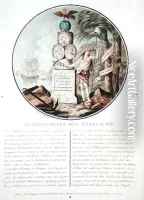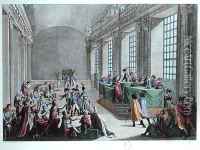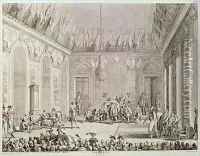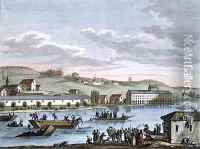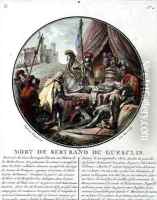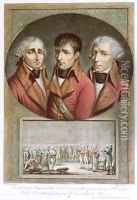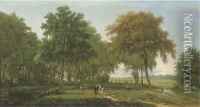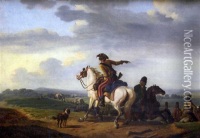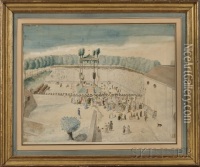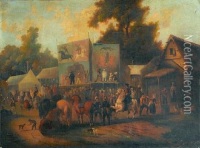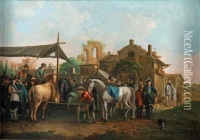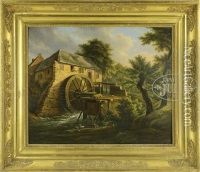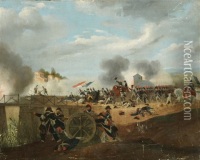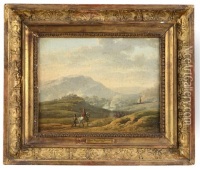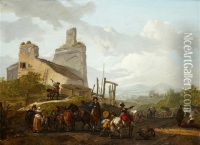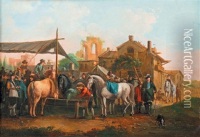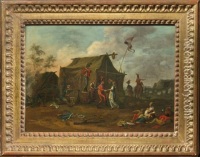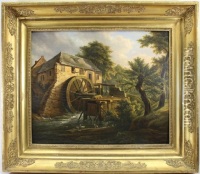Jean Duplessis-Bertaux Paintings
Jean Duplessis-Bertaux was a French artist, primarily known for his skills in engraving and drawing, who made a significant mark in the art world during the late 18th and early 19th centuries. Born in 1747, Duplessis-Bertaux's career spanned a tumultuous period in French history, including the French Revolution and the Napoleonic era, events that significantly influenced his work and the themes he chose to depict.
Duplessis-Bertaux was not just an artist but also an astute observer of the political and social changes sweeping through France at the time. His works often reflected the upheaval and the dramatic events of his era, serving not only as artistic expressions but also as historical documents. He had a particular talent for capturing the essence of public events and figures, rendering scenes with a level of detail and accuracy that made his engravings a valuable resource for understanding French history.
Though not as widely recognized today as some of his contemporaries, Duplessis-Bertaux's contribution to the art of engraving and illustration is noteworthy. He excelled in depicting scenes of battles, political events, and historical figures, imbuing his works with a sense of immediacy and dynamism. His engravings were often used to illustrate books and periodicals, making them accessible to a wider public and cementing his reputation as a chronicler of his times.
Jean Duplessis-Bertaux's death in 1819 marked the end of a career that had not only reflected the artist's considerable skill and versatility but also encapsulated a pivotal era in French history. His legacy, while perhaps overshadowed by more prominent figures of the art world, remains an important testament to the role of artists in documenting and interpreting the world around them. Through his detailed engravings and drawings, Duplessis-Bertaux offered future generations a window into the complexities and tumult of the French Revolution and its aftermath, showcasing the power of art as a medium for historical narrative and reflection.
